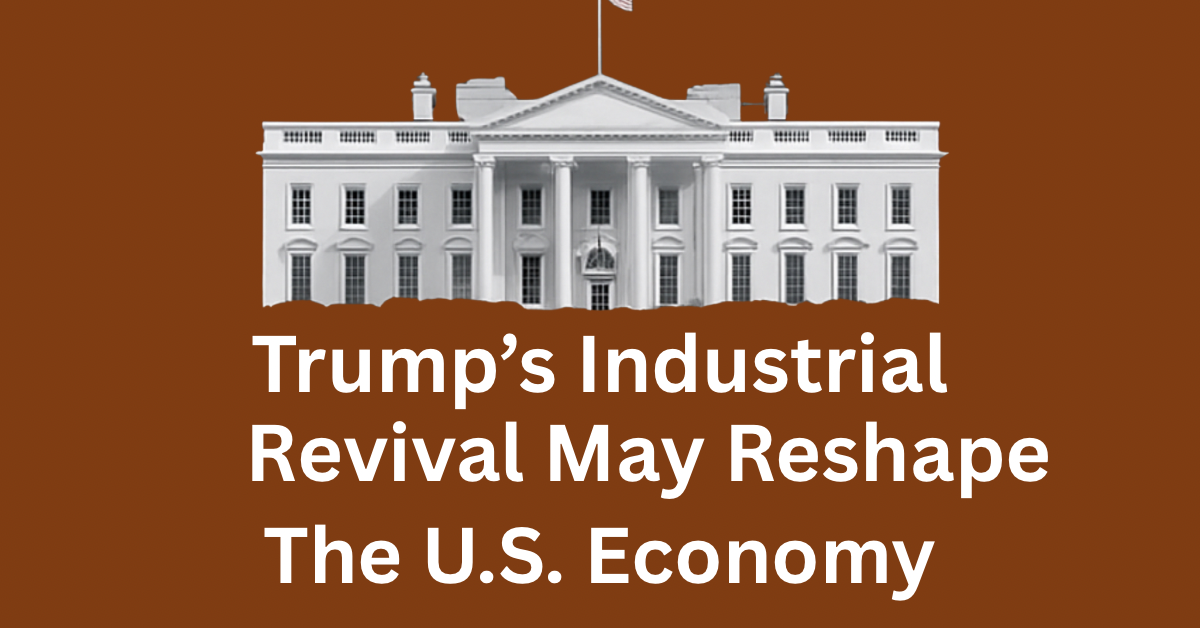WASHINGTON — President Donald J. Trump’s latest push to reindustrialize the United States is more than campaign symbolism. Since returning to office, his administration has aggressively promoted a sweeping vision to bring manufacturing, technology, and energy infrastructure back to American soil. The result? More than $14 trillion in announced public-private investments, backed by U.S. giants like Apple and NVIDIA — and foreign governments including Japan, the UAE, and Saudi Arabia.
This revival, framed by the White House as a “national comeback,” centers on high-stakes sectors like AI hardware, semiconductors, biotech, and electric vehicles — all woven into Trump’s broader “America First” trade doctrine. The question remains: Is this merely a post-COVID reshoring boom, or a generational economic realignment?
Steel and Silicon: Trump’s Two-Track Strategy
Trump’s economic plan pivots on two strategic priorities: heavy industry and advanced technology. During his May 2025 visit to Pennsylvania, the president announced a $14 billion deal between U.S. Steel and Japan’s Nippon Steel, expected to create at least 70,000 jobs. “Steel made in America will power America again,” Trump said at the Pittsburgh rally.
Simultaneously, the White House revealed support for Project Stargate — a $500 billion initiative by SoftBank, OpenAI, and Oracle to build U.S.-based AI supercomputing infrastructure. This signals a strategic pivot from outsourcing to onshoring high-end digital capabilities previously dominated by China and Taiwan.
The Investment Surge — By the Numbers
According to the White House, over 60 corporations and foreign sovereign funds have pledged capital to U.S. facilities since January 2025. Notable investments include:
- Apple – $500 billion in U.S. manufacturing and workforce development
- NVIDIA – $500 billion in AI infrastructure across four U.S. states
- TSMC – $100 billion in U.S. chip fabrication plants
- Hyundai, Honda, Toyota – Over $40 billion in EV and hybrid manufacturing expansion
- SoftBank + OpenAI – $500 billion in AI supercomputing capacity (Project Stargate)
- UAE – $1.4 trillion in U.S.-focused strategic investments (energy, data centers)
- Japan – $1 trillion in bilateral U.S.-based production expansion
According to the Wall Street Journal, capital expenditure on U.S. factory construction has increased by 52% compared to 2023. “This is the most aggressive industrial reinvestment campaign since the 1940s,” noted Goldman Sachs industrial strategist Olivia Cheng.
A New Era for American Labor?
Trump’s industrial revival has stirred cautious optimism from labor unions. Liz Shuler, president of the AFL-CIO, told Politico, “We welcome job creation, but the administration must ensure these are union-backed, middle-class jobs — not just tech apprenticeships in name only.”
Economists agree the jobs impact could be sweeping. A Brookings Institution report suggests that over 3 million new jobs could be created if even 40% of the announced projects come to fruition by 2030. Sectors expected to benefit most include electrical assembly, semiconductor engineering, logistics, and AI software integration.
Risks Ahead: Inflation, Climate, and Trade Fallout
Despite the optimism, several analysts warn of serious risks. The Peterson Institute cautions that inflationary pressure from construction, labor competition, and raw materials could push interest rates higher. “Industrial policy is inherently inflationary,” said PIIE’s Chad Bown.
Environmental groups, meanwhile, have raised alarms about unregulated factory expansion. The NRDC criticized the administration for “rushing permits and skipping environmental review” in several energy and manufacturing zones.
On the global stage, U.S.-China tensions continue to simmer. Beijing has threatened tariffs on U.S. agricultural goods in response to Trump’s AI export controls. European allies, while supportive of reduced reliance on Chinese supply chains, remain wary of America’s unilateral trade positioning.
A New Economic Order?
One of the most profound effects of Trump’s policy may be the emerging economic realignment. Nations like the UAE, Qatar, and Japan have become top-tier U.S. investment partners. Ian Bremmer of Eurasia Group notes: “The U.S. is now the world’s most attractive destination for politically secure, long-term industrial investment.”
At a time when supply chains are fractured, Trump’s reshoring doctrine may be positioning the U.S. not just as a manufacturing hub — but as a bulwark against geopolitical fragmentation.
Conclusion: Can the Momentum Last?
President Trump’s industrial plan is still in its infancy, but the numbers are staggering. If even a portion of these projects deliver on their promises, the next decade could see the U.S. emerge as both the innovation engine and the production base of the democratic world.
Whether this transformation will be equitable, green, and geopolitically stabilizing depends on execution. For now, America’s machines are humming again — and the global economy is watching.
(Sources: White House, Wall Street Journal, Brookings Institution, Peterson Institute, Council on Foreign Relations, New York Times, Eurasia Group, Politico, NRDC)
A global media for the latest news, entertainment, music fashion, and more.















